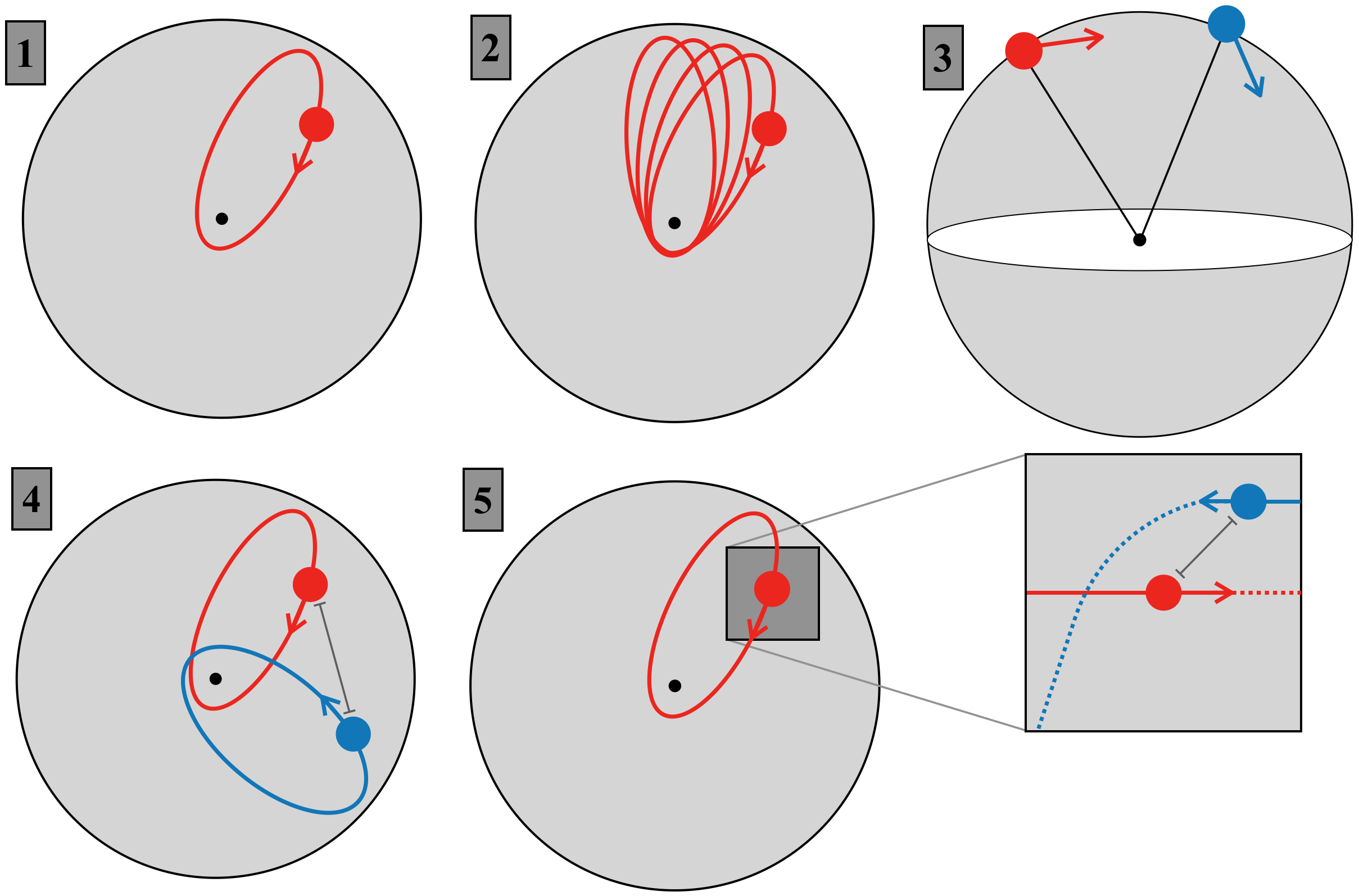M 1 Astronomy Internship 2020
Vector Resonant Relaxation in Stellar Systems
Astrophysical Context
In the vicinity of a supermassive black hole, stars move on nearly Keplerian orbits. Yet, because of the enclosed stellar mass and relativistic corrections, the potential slightly deviates from the Keplerian one, which causes the stellar orbits to precess. Similarly, as a result of the finite number of stars, the mutual gravitational torques between pairs of stars also drive a rapid reshuffling of the stars' orbital orientations, much faster than the standard deflections by close encounters. Overall, the combination of these two effects leads to a stochastic evolution of stellar orbital angular momentum vectors, through a process named ``resonant relaxation''.
Upshot
This internship will be focused on the process of vector resonant relaxation, namely the relaxation of stars' orbital orientations. In particular, we will derive and implement the appropriate evolution equations for that dynamics, both in the context of galactic nuclei (systems with a central mass) and globular clusters (systems without a central mass). We will explore how fast multipole expansions can be tailored to that setup to allow for very efficient numerical explorations of these long-term relaxations. These investigations should offer new clues on the spontaneous formations or dissolutions of non-spherical disc structures in galactic nuclei, as currently observed in the very vicinity of SgrA*, the Milky Way's galactic nuclei, as well as in the centre of globular clusters.
Requirement
Strong interest in theoretical astronomy, dynamics, analytical and numerical work.
Framework
The internship will be co-supervised by Jean-Baptiste Fouvry and Christophe Pichon, as part of the SEGAL ANR (www.secular-evolution.org).
References
Rauch & Tremaine (1996)
Dehnen (2014)
Kocsis & Tremaine (2015)
Roupas et al. (2017)
Szolgyen & Kocsis (2018)
Fouvry et al. (2019)
Fouvry et al. (2019)






